“I declare that the Beatles are mutants, prototypes of evolutionary agents sent by God, endowed with a mysterious power to create a new human species.”—Dr. Timothy Leary
Rolling Stone recently announced its top 500 pop music albums of all time. Perched at the top of the heap is the Beatles’ legendary Sgt. Pepper’s Lonely Hearts Club Band. Unleashed on the world 45 years ago on June 1, 1967, Sgt. Pepper’s, as Rolling Stone heralds, “is the most important rock & roll album ever made, an unsurpassed adventure in concept, sound, sanguinity, cover art and studio technology by the greatest rock & roll group of all time.”[1]
To the Beatles, weary of the endless mayhem of concerts and Beatlemania, Sgt. Pepper’s was a declaration of change, both culturally and personally. “We were fed up with being Beatles,” Paul McCartney would later say. “We were not boys, we were men… artists rather than performers.”[2] Retreating into the Abbey Road studios, the Beatles focused their efforts on creating a concept album that would showcase their artistry and vision, while serving as a substitute for touring—a way to embark on a virtual tour with the album as the medium. Seven hundred recording hours later, Sgt. Pepper’s was born in all its psychedelic glory, the Beatles’ most audacious and inspired leap into the avant-garde: their self-presentation as fictional characters. Sgt. Pepper transformed rock music from a musical diversion for young people into an art form—one that remains revered to this day.
Although the album begins as a light farce, it moves to a sobering awakening. The songs are somewhat bizarre and sometimes ghoulish, but, at heart, Sgt. Pepper was a spiritual experience for an increasingly materialistic world. George Harrison’s “Within You, Without You,” the centerpiece of the album, is a warning not to get lost in materialism or we will lose our souls:
We were talking
About the love we all could share
When we find it
To try our best to hold it there
With our love, with our love
We could save the world
If they only knew.
We were talking
About the love that’s gone so cold
And the people who gain the world
And lose their soul
They don’t know, they can’t see
Are you one of them.
The album’s final song, John Lennon’s “A Day in the Life,” points to the horrors of existence if humanity does not abstain from its destructive tendencies. In fact, “A Day in the Life” sets the other songs on the album and the Beatles’ career in perspective. A collection of vignettes that are somewhat tragic, the song is punctuated with the phrase “I’d love to turn you on”—either a reference to drugs or the need to tune in to the Beatles’ message. No doubt drugs were an intended reference in “A Day in the Life.” As author Mark Hertsgaard writes, “Indeed John and at least one other Beatle were tripping—or flying, as John put it—during the photo session for the Sgt. Pepper album cover.”
The Beatles underscored the verses of that final song with a dark, tumultuous orchestra crescendo. McCartney had wanted to include an instrumental passage with the avant-garde feel of musician John Cage and others, a spiraling ascent of sound, beginning with all instruments, each climbing to the highest in their own time. Lennon wanted the song to end with “a sound like the end of the world.” Thus, the Beatles simultaneously struck an E-major chord on three grand pianos, drawing the sound as long as possible with electronic enhancement. The effect of the crashing E-major chord, followed by some 53 seconds of gradually dwindling reverberation, brings to mind nothing so much as the eerily spreading hush of the mushroom cloud-visions of nuclear holocaust.
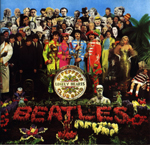 The cover art for Sgt. Pepper, now one of the best-known works of pop art, was as mind-blowing as the album’s contents. Created by Peter Blake, the album cover represented the first fusion of pop art and pop music. Distorting the line between fantasy and reality, Blake placed the Beatles, who were dressed in Victorian band uniforms, among notable historical figures and artists past and present—some of whom were handpicked by the Beatles—including George Bernard Shaw, Edgar Allen Poe, Aldous Huxley, Lenny Bruce, Mae West and Bob Dylan. In this way, art romanticizes celebrity. The cover, an homage to the Beatles’ late live stage career, with the figures arranged in a funereal pose as if attending a graveside memorial, was also a harbinger of the earthshaking changes to come, for both the Beatles, young people of their day, and the world at large.
The cover art for Sgt. Pepper, now one of the best-known works of pop art, was as mind-blowing as the album’s contents. Created by Peter Blake, the album cover represented the first fusion of pop art and pop music. Distorting the line between fantasy and reality, Blake placed the Beatles, who were dressed in Victorian band uniforms, among notable historical figures and artists past and present—some of whom were handpicked by the Beatles—including George Bernard Shaw, Edgar Allen Poe, Aldous Huxley, Lenny Bruce, Mae West and Bob Dylan. In this way, art romanticizes celebrity. The cover, an homage to the Beatles’ late live stage career, with the figures arranged in a funereal pose as if attending a graveside memorial, was also a harbinger of the earthshaking changes to come, for both the Beatles, young people of their day, and the world at large.
The events leading up to 1967 laid the groundwork for a social revolution powered by young people. With the young ripe for rebellion, drugs invading the country and altering people’s consciousness, and the drums of war providing a constant backbeat, it was only a matter of time before flower power and peace became the mantra of the Sixties’ generation. In turn, the playfulness of those years led to the hippie movement and, ultimately, to an abdication of adulthood. There was a sense that there was no need to grow up anymore. But, as author Mary Gordon notes, “the flower child’s sense of well being gradually disintegrated as Vietnam became more central to consciousness.” University students and academics began believing that the Vietnam War was a direct result of the greed and lies of old men in suits and uniforms. The government—the “Establishment” that John Lennon would later refer to as “the monster”—had withheld the real story in order to do its dirty work.
All of these cultural streams converged in Sgt. Pepper’s Lonely Hearts Club Band, which was hailed as a major cultural event upon its release, simultaneously mirroring the angst of its age while offering a solution to the social and political upheavals of the day. The solution offered by the Beatles was a return to spirituality and love for our fellow human beings.
“It was the soundtrack to summer, and winter for that matter,” notes author Barry Miles. “You could not get away from it.” Indeed, young and old alike approached Sgt. Pepper with a religious awe. The LSD evangelist Timothy Leary, after listening to the album, reputedly said in a mystical voice, “My work is finished. Now, it’s out.” Leary actually believed he could hear the voice of God in the music of the Beatles.
David Crosby of the popular rock band the Byrds brought a tape of the Sgt. Pepper album to the band’s hotel room and “played it all night in the lobby with a hundred young fans listening quietly on the stairs, as if rapt by a spiritual experience.” Paul Kantner of the acid rock band Jefferson Airplane said, “Something enveloped the whole world at that time and it just exploded into a renaissance.” And as musicologist Tim Riley observed: “The closest Western Civilization has come to unity since the Congress of Vienna in 1815 was the week the Sgt. Pepper album was released. For a brief while the irreparable fragmented consciousness of the West was unified, at least in the minds of the young.”
The Summer of Love followed in the wake of Sgt. Pepper’s release. Optimism filled the air, the almost tangible hope that peace would eventually prevail and the destructiveness of humanity would end. Armed with “flower power,” young people took to the streets and demonstrated en masse against the Vietnam War.
By 1968, however, the radiance of that golden age had already started to fade. Student rebels around the world adopted more militant tactics. Flower power was replaced by raised fists. Cultural heroes such as Martin Luther King Jr. and Bobby Kennedy were brutally assassinated. The Beatles too were disbanding. They were not gods, after all, and the love that once united them grew cold. By the end of 1968, it was clear that the Beatles were not going to save the world.
Nevertheless, the music of the Beatles remains with us still, a poignant reminder that we all have a part to play in bringing about a world dedicated to peace and love. Yet the lesson—that evil does not have to triumph and that good can prevail if only we can step beyond our self-interest—is one that we each must learn in our own time and in our own way. In the words of George Harrison:
When you’ve seen beyond yourself
Then you may find
Peace of mind is waiting there
And the time will come
When you see we’re all one
And life flows on within you and without you.
—-
[1] “500 Greatest Albums of All Time,” Rolling Stone, http://www.rollingstone.com/music/lists/500-greatest-albums-of-all-time-19691231/sgt-peppers-lonely-hearts-club-band-the-beatles-19691231.
[2] “500 Greatest Albums of All Time,” Rolling Stone, http://www.rollingstone.com/music/lists/500-greatest-albums-of-all-time-19691231/sgt-peppers-lonely-hearts-club-band-the-beatles-19691231.
—-
Page-top Artwork © 2012 Joshua Whitehead
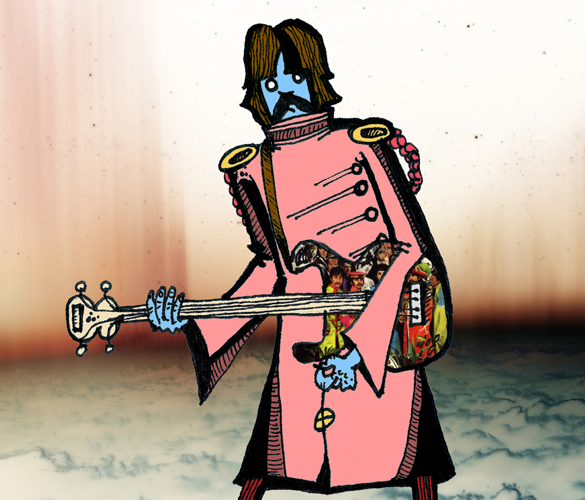
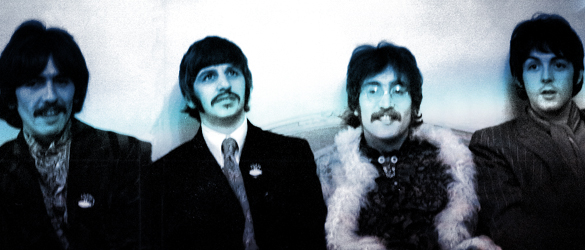
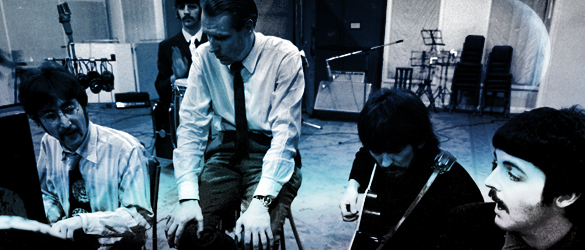
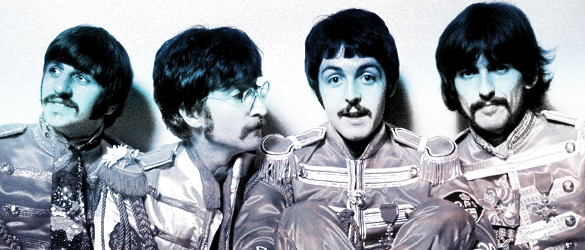
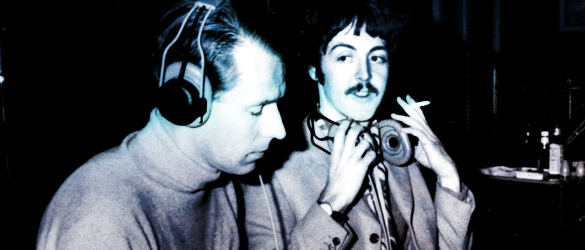
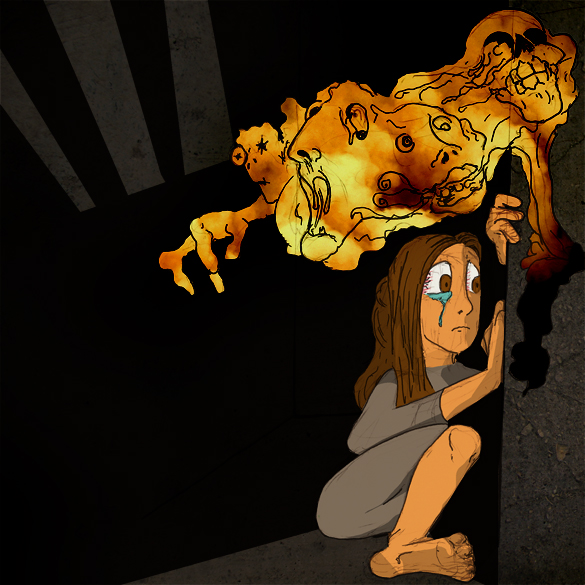

Yes, they sure are masters of free piitbculy. It got picked up even by small, local newspapers in Sweden. But if they do these kind of stunts their PR machinery will start having problems. I mean it’s pretty far from an unforgettable day’ when they release a few albums on iTunes even if it’s Beatles.